Posted on December 16, 2020
Link to original story here
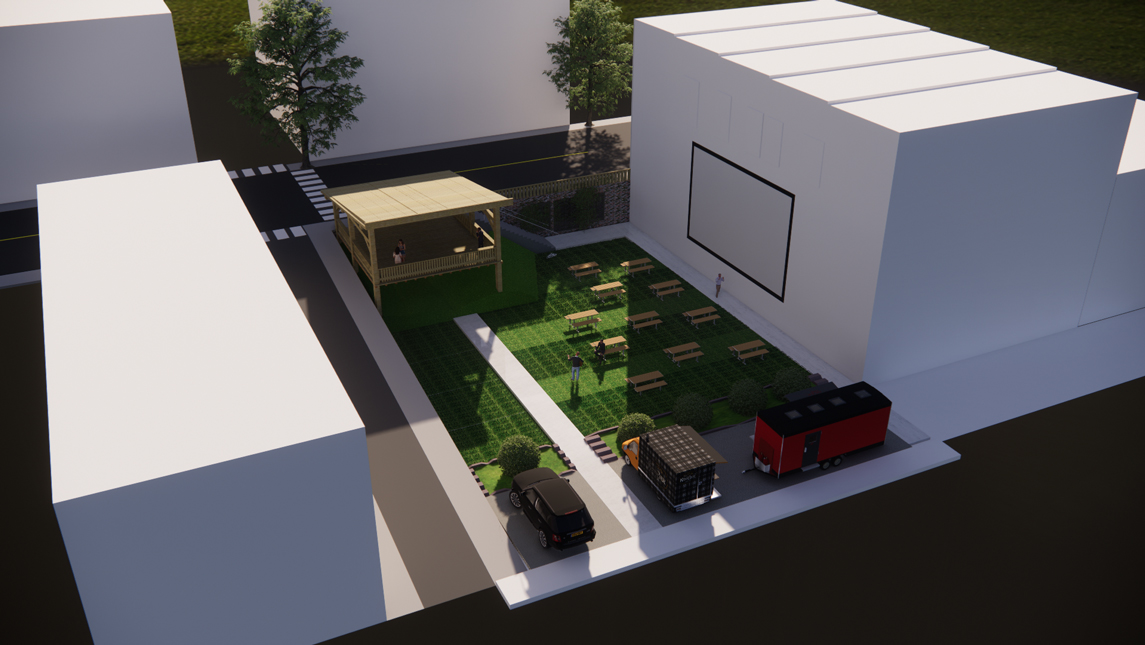
A design for Rutherfordton, N.C., by fourth-year interior architecture student Sinaya Lawson
Public spaces are vastly important for public life.
Even if there is no interaction between strangers, having areas in towns and cities where people can see each other is crucial for healthy communities.
This year, the COVID-19 pandemic changed what spaces we can occupy and how we can behave within them. Restaurants and other indoor entertainment areas must adhere to strict capacity limits. Even outdoor spaces require much more distance between people.
But public spaces are still important.
UNC Greensboro interior architecture (IARc) students working as Main Street Fellows with Associate Professor Travis Hicks have kept pandemic safety front-of-mind this semester as they have worked on new design projects.
Through the Main Street Program, a national program that assists in downtown revitalizations, their designs will crop up in public spaces around North Carolina in the next year. Hicks, who is the director of the Center for Community-Engaged Design, has facilitated this connection with UNCG for five years with Professor Emerita Jo Ramsay Leimenstoll, guiding students in providing a real-world service as they use the skills they’re learning in their coursework.
In the past, much of the work for the Main Street Program has consisted of façade enhancements and second story renovations, but this year the conversations began to revolve around how public spaces can be converted for COVID-19 safety.
When Hicks and his students sent out a request for projects related to pandemic safety, the number doubled almost overnight.
“A lot of small towns are really hungry for assistance to figure out what to do with their public spaces – alleyways, empty lots, pocket parks – to help the businesses in those towns stay afloat,” said Hicks.
The projects are meant to consider outdoor seating and dining, sheltered outdoor spaces that maintain social distancing and have other features that promote public health safety. The projects have required more interaction with city officials than the typical projects, in considering public health standards and precautions, so Hicks and the student designers have held Zoom discussions with town managers, town engineers, and the Main Street managers from various towns, as well as arts council leaders and historic commission board leaders.
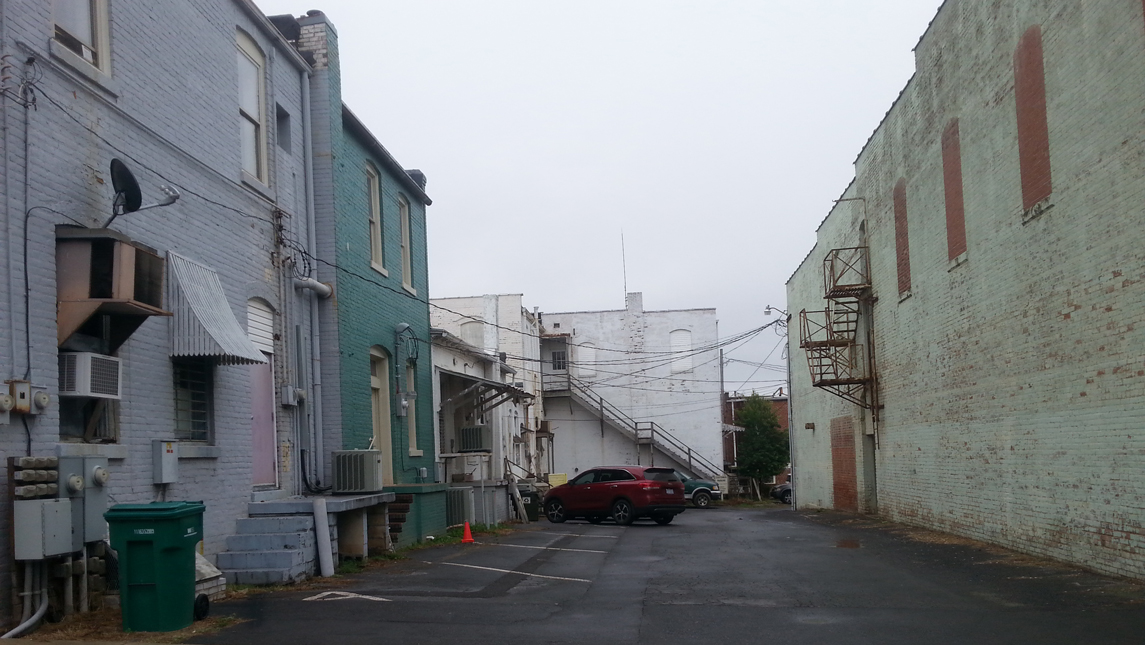
An alleyway in Albermarle, N.C. that the city submitted to receive a design proposal from UNCG.
“In terms of COVID, the biggest thing that I’ve found is making sure we make it possible for people to stay six feet apart,” said Katherine Perez Nunez, a fourth-year student who has created a design for an alleyway space in Morganton, N.C. “And then another important thing was the materials that we use in the space. Even though this is an outdoor space, we still need to think about how the materials can be cleaned.”
Her designs include zones so that different groups can remain separated by enough distance, and handwashing stations.
“We want multiple stations available in a space, and for people coming from different zones to be able to reach them quickly,” she explained.
Recent graduate Bianca Jenkins worked on a design for the town of Albemarle, N.C.
“With everything, I’ve been trying to make sure that it was flexible, and it can be easily manipulated, in case they want to use a space for a small concert one night and dining the next,” said Jenkins. “The way I incorporate lighting and tables, and things like murals and planters and privacy fences, I make them adaptable. And then another big thing was to just to create that sense of normalcy, because we’re trying to incorporate a different way of life. So, we’re trying to have it safe, but also still be ‘normal’ for them to be able to come in and enjoy dinner there. And making sure that all of the space is utilized well is really important when you’re designing for COVID.”
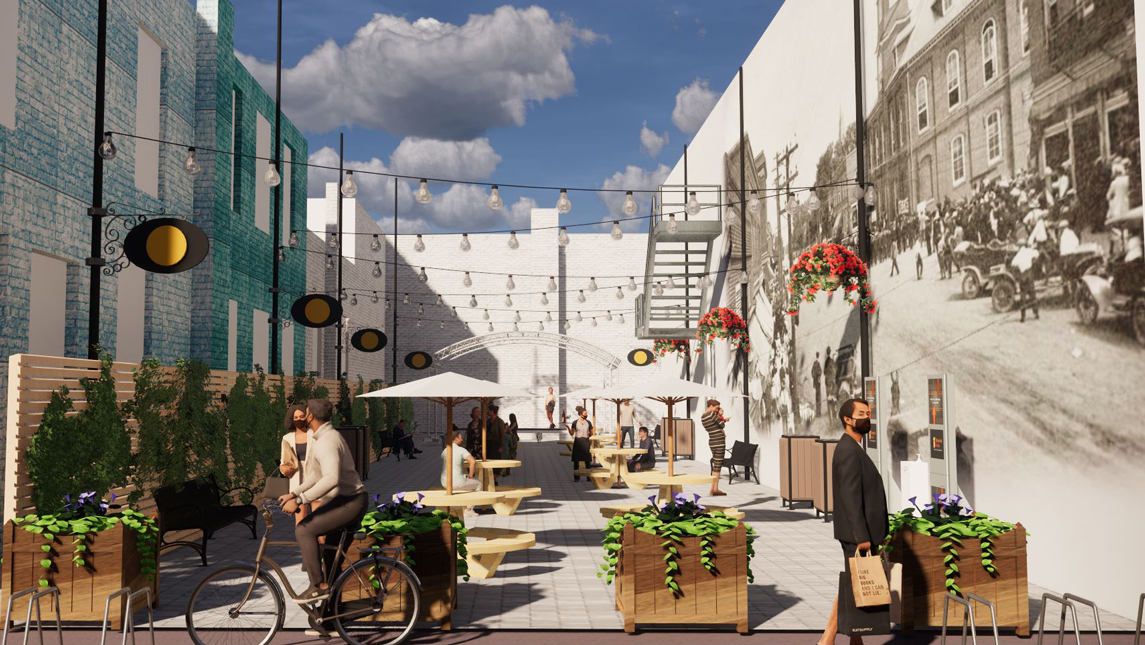
A design for the Albermarle alleyway created by 2020 UNCG graduate in interior architecture Bianca Jenkins
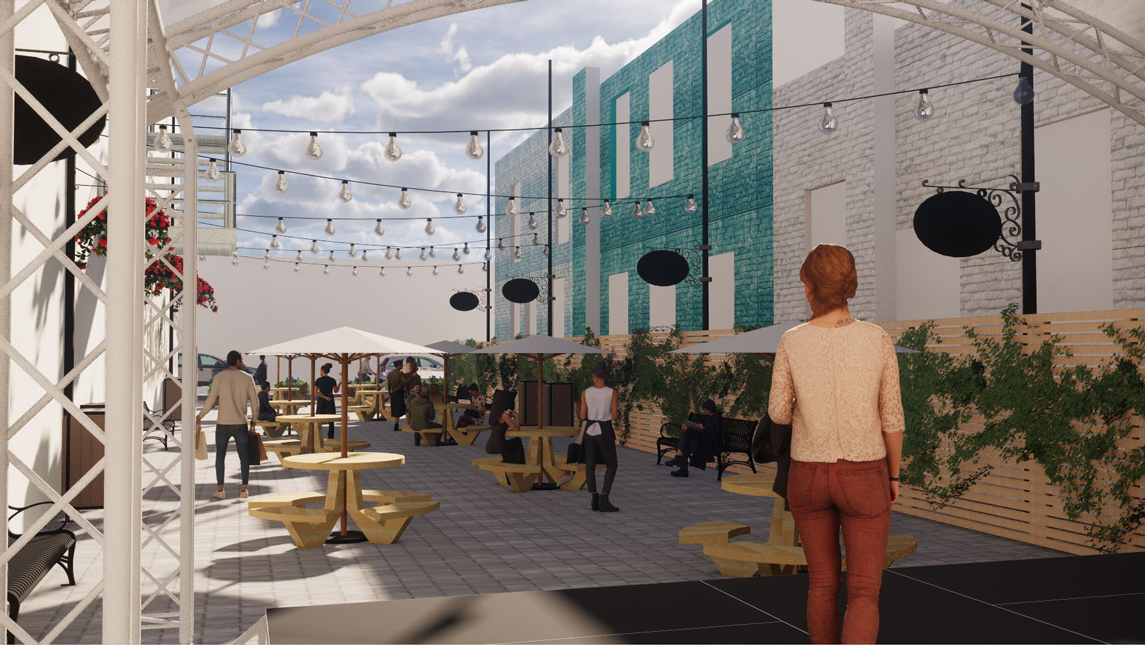
Albermarle, N.C., alleyway design, created by Bianca Jenkins ’20
The designs allow the towns to address several issues at once: COVID-19 safety, beautification, and revitalization for spaces that have been dormant or in disrepair. Along with design principles, regular safety codes, and accessibility guidelines, the students have also demonstrated the connections between design and public health. And, as always, they are designing for the psychological health of communities.
“In this era, when we’re all in our own homes most of the time, these outdoor spaces are really important,” said Hicks. “Having the ability to go outside and reconnect with the community, even if you aren’t closer than six feet to anybody – I think it’s really good for our psychological and emotional health. So, these outdoor spaces are going to be really important to towns in the same way that we might have thought of indoor spaces in the past.”
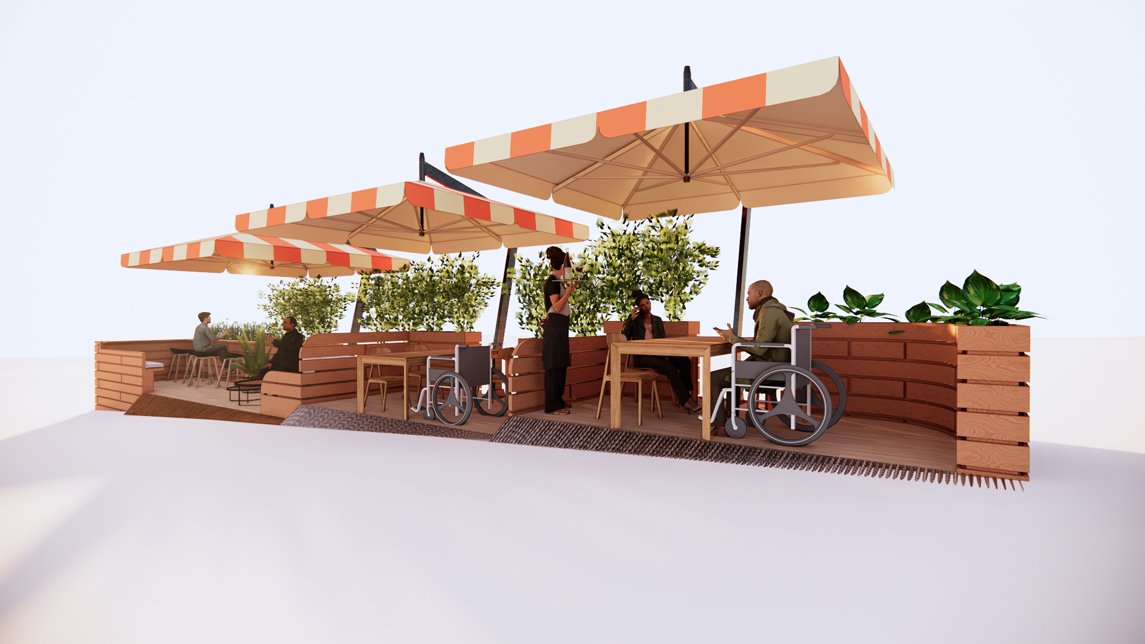
A socially distanced restaurant patio design by UNCG IARc student Alexander Nguyen
Story by Susan Kirby-Smith, University Communications
Designs by UNCG interior architecture students Sinaya Lawson, Bianca Jenkins, and Alexander Nguyen